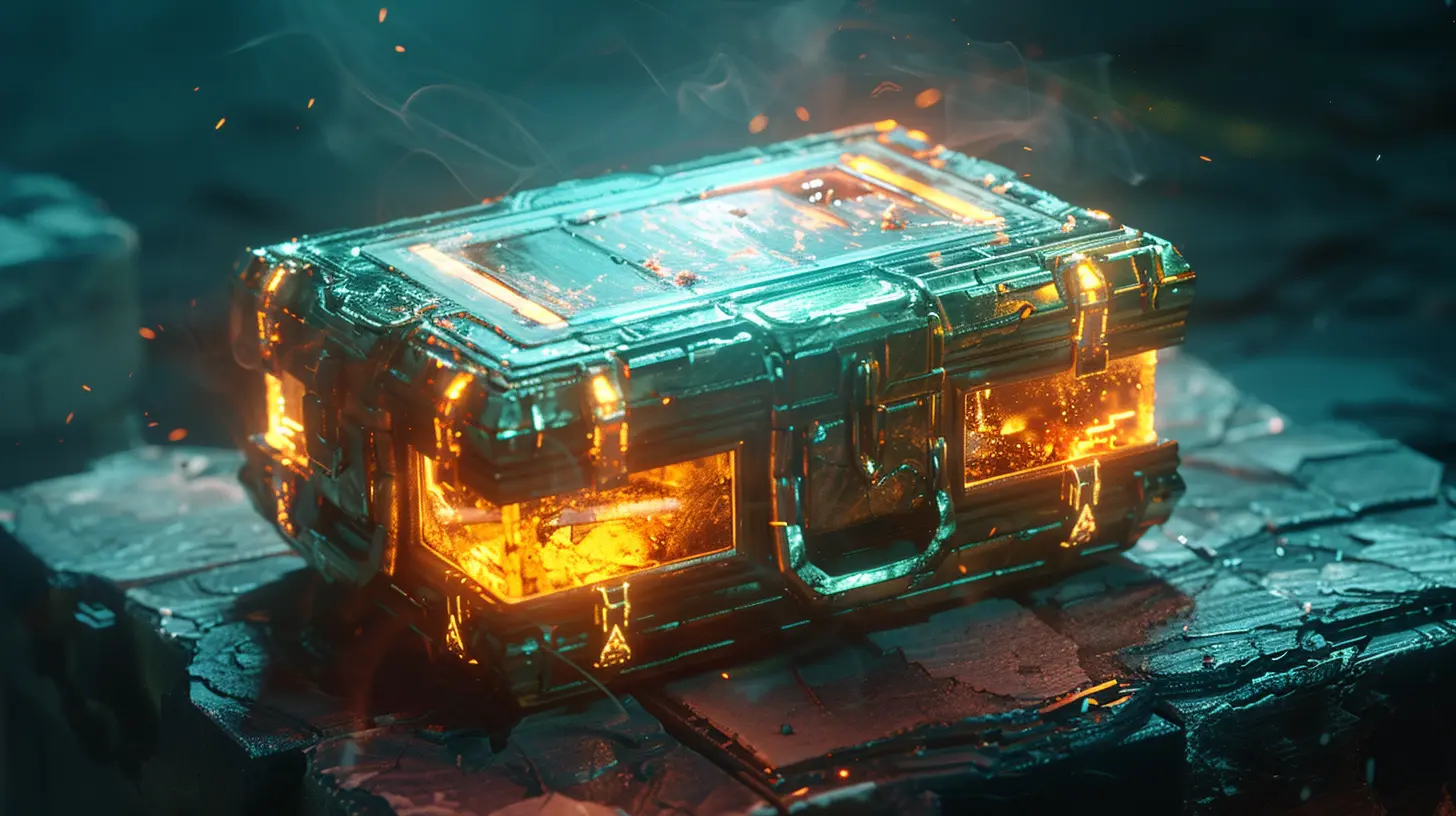The Truth About Loot Boxes and Player Engagement
21 October 2025
Let’s face it—when you hear the words “loot boxes,” chances are, you don’t think of rainbows and butterflies. You probably think of flashy animations, randomized rewards, and long nights chasing that one rare skin that never seems to drop. But here’s the real question: are loot boxes really keeping us engaged in games, or is it all just smoke and mirrors?
Buckle up, because we’re diving deep into the mysterious—and sometimes shady—world of loot boxes. We’ll peel back the digital curtain and see what truly lies beneath the shiny surface.
What Exactly Are Loot Boxes?
Let’s start at the beginning.Loot boxes are virtual containers inside video games—think treasure chests—that players can open to receive random in-game rewards. These could be anything from common gear to ultra-rare cosmetic items (hello, golden sniper skin!).
Sometimes, you earn loot boxes by playing the game. Other times (and more often), you're encouraged to purchase them with real money. And that’s where things get interesting—and controversial.
So… are they fun, or are they just gambling disguised in pixels?
The Seductive Allure of Randomness
There’s something about randomness that really gets to us. You crack open a loot box, your heart speeds up, and you cross your fingers. You know it's probably junk, but still… maybe this time?That feeling—that anticipation—it taps into the same psychological triggers that slot machines use. And no, that's not an exaggeration.
Loot boxes stimulate your brain’s reward system. When you finally pull that rare item, your brain releases dopamine, the "feel-good" chemical. It’s a high. And like any high, we chase it. That’s exactly why players open box after box, hoping to hit the jackpot again.
Cue the addictive cycle.
The Hidden Math Behind Loot Boxes
Let’s talk numbers.The odds of getting what you want? Usually slim to none. Game developers rarely tell you the exact drop rates (though some are legally required to now). It’s like playing a digital lottery where the house (a.k.a. the game publisher) always wins.
And even when drop rates are disclosed—say a 0.5% chance for that legendary skin—do you really feel like you’re going to hit that one-in-two-hundred shot? Probably not. But hey, people win the actual lottery, right?
Here’s the kicker: that small chance is just enough to keep you trying.
Are Loot Boxes Manipulating Player Behavior?
Yup, and they’re really good at it.Game developers design engagement loops—clever systems that keep you playing. And loot boxes are often right at the center. They dangle rewards in front of us, tease our curiosity, and make us feel like we’re always one box away from something awesome.
Ever notice how some games give you a “free” loot box every day if you just log in? That’s not generosity. That’s a hook.
You come back. You open the box. You think, “Well, maybe I’ll play a match or two.” Suddenly, you’re spending more time—and maybe a little cash—all because of a shiny box.
The Thin Line Between Fun and Exploitation
Here’s where things get a little darker.Loot boxes can feel fun, but for some players, they’re a slippery slope into problem behavior. And I’m not just talking about kids.
Plenty of adults have dumped hundreds—sometimes thousands—of dollars into these digital grab bags. And the worst part? They don’t even realize how much they’ve spent until it's way too late.
Now imagine being a 12-year-old with access to your parents’ credit card and a game that encourages you to keep spinning the digital roulette wheel.
Yeah. Not great.
Are Loot Boxes Gambling?
Big question. Let’s dissect it.Technically, gambling involves three things:
1. You pay something of value (money).
2. There’s an element of chance.
3. There’s a prize with real or perceived value.
Sound familiar?
That’s why some countries—like Belgium and the Netherlands—have outright banned loot boxes in games. They see them as unregulated gambling targeting kids. And honestly? They're not wrong.
Game companies argue: “But the items don’t have real-world value!”
But let’s be real. If people are buying, trading, or selling those items online (which they are), they absolutely have value. Just because it's not cash handed over in-game doesn’t mean it’s not gambling.
Why Game Developers Love Loot Boxes
Money, plain and simple.Loot boxes are a goldmine for developers. They rake in billions every year—yes, billions. In fact, a lot of free-to-play games make most of their revenue from selling virtual boxes.
They hook players with free content, then nudge them toward loot boxes. Some players resist; others spend like there’s no tomorrow.
It’s a monetization strategy that’s wildly effective… and increasingly controversial.
Player Engagement: The Carrot and the Stick
Let’s flip the script for a sec. Loot boxes do keep players engaged—but not always in a healthy way.They’re often used to create artificial scarcity. Want that cool seasonal skin? It’s only available through this loot box. For two weeks. Better act fast!
FOMO (fear of missing out) kicks in. You don’t even really want the skin… but you also don’t want to be the only one without it. Before you know it, you’re grinding the game or opening your wallet.
That’s not organic engagement—it’s manipulation wrapped in a flashy package.
Alternatives to Loot Boxes (Yes, There’s Hope!)
Not every game goes down the loot box rabbit hole. Some offer battle passes, where you unlock rewards by playing. Others let you buy skins or gear directly with in-game currency.These systems are transparent. You know what you're getting. You’re in control.
And guess what? Players are asking for more of these. We’re getting smarter. We’re starting to reject shady practices and reward games that treat us with respect.
Games like Fortnite, Apex Legends, and even Halo Infinite (eventually) moved toward more transparent reward systems. It’s not perfect, but it’s progress.
The Future of Loot Boxes: Regulation or Revolution?
So where do we go from here?Governments are stepping in. More countries are investigating loot boxes. Some are enforcing stricter regulations. A few are pushing for full bans unless developers make radical changes.
Players are speaking up, too. Forums, Reddit threads, and YouTube exposés are full of people calling out shady mechanics.
Change is coming. Slowly, but surely.
Maybe loot boxes won’t disappear entirely—but they’ll evolve. Less sketchy, more controlled, and hopefully less exploitative.
Final Thoughts: Are Loot Boxes Here to Stay?
Here’s the truth: loot boxes are powerful tools. They can be fun, engaging, and rewarding—but only when designed ethically.When used responsibly, they can add excitement. But when abused? They become toxic traps that exploit our psychology, drain our wallets, and damage the trust between players and developers.
The balance is delicate. And honestly? It's up to us—the players—to demand better.
So next time you see that glowing box on your screen, take a moment. Breathe. Ask yourself: “Do I really want what’s inside… or am I just chasing a feeling?”
Because sometimes, the real loot box… is the friends we made along the way. (Okay, maybe not. But you get the point.
all images in this post were generated using AI tools
Category:
Game MonetizationAuthor:

Stephanie Abbott

